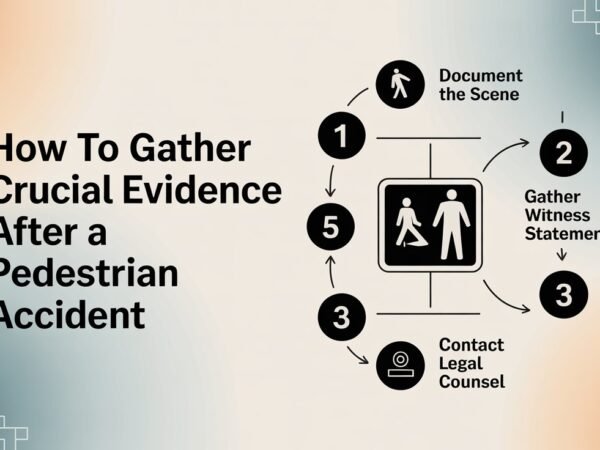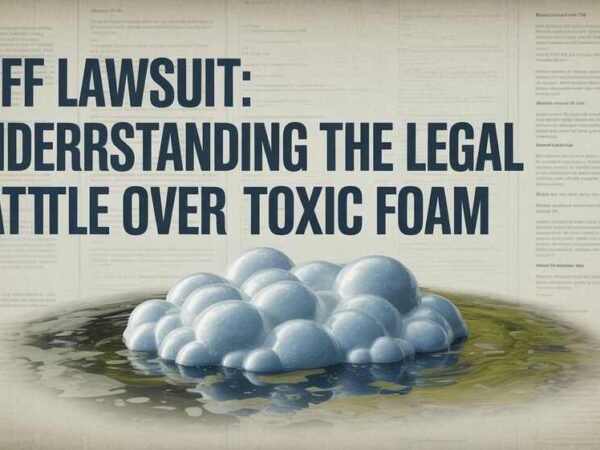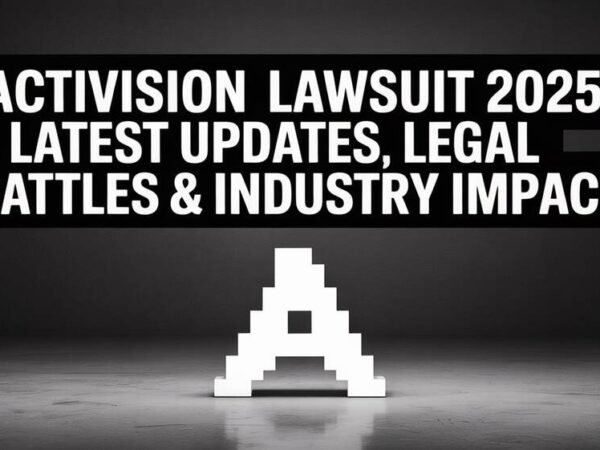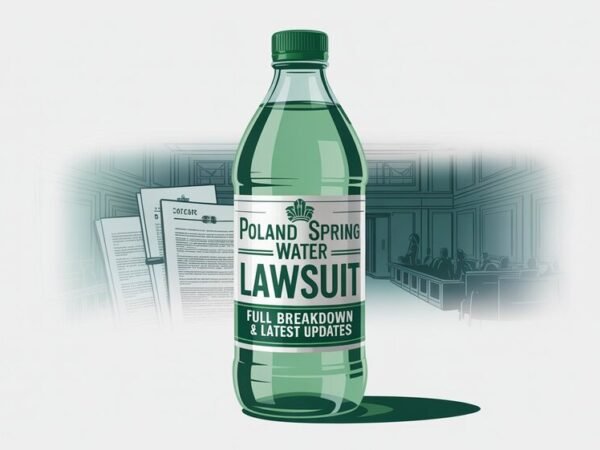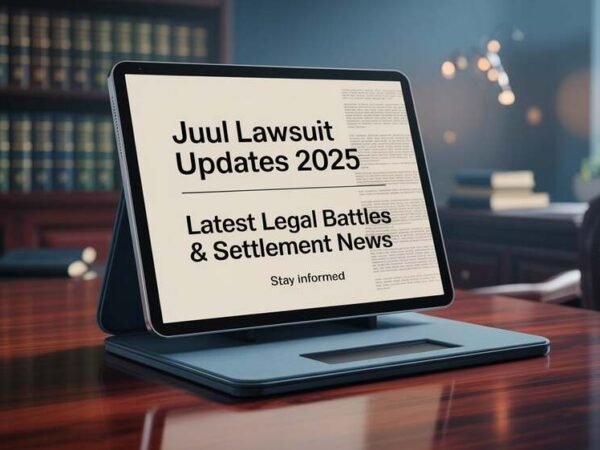Introduction: What Is an Auto Accident Lawsuit?
An auto accident lawsuit is a legal process through which a car crash victim seeks compensation for damages caused by another party’s negligence. These lawsuits cover a range of financial and non-financial losses, including medical expenses, lost wages, pain and suffering, and vehicle repairs. In 2025, with road traffic and technology evolving rapidly, the legal landscape surrounding auto accidents continues to shift. Many individuals are unaware of their rights or the appropriate steps to take after being involved in an accident. Whether you’re a victim or a concerned citizen, understanding how auto accident lawsuits work is crucial for protecting your legal and financial well-being.
Top Causes of Car Accidents in 2025
Car accidents remain one of the leading causes of injury and death in the United States. In 2025, while technology like driver-assist systems is more prevalent, human error continues to dominate crash statistics. Distracted driving is now more than just texting—drivers are also engaged with in-dash screens, social media apps, and even video calls. Impaired driving, whether from alcohol, marijuana, or prescription drugs, remains a serious issue. Speeding and reckless behavior, such as aggressive lane changes and tailgating, often result in severe collisions. Additionally, bad weather conditions—from icy roads to low visibility—add complexity to liability in these cases. Recognizing the cause of the crash is the first step toward establishing legal responsibility in an auto accident lawsuit.
What to Do Immediately After a Car Accident
What you do in the minutes and hours following a car accident can make or break your future lawsuit. First, prioritize safety. Move your vehicle to a secure location and check on all parties involved. Call 911 to report the accident and request medical assistance. Even if injuries seem minor, it’s crucial to get evaluated by a healthcare professional. From a legal standpoint, documenting the scene is vital. Use your phone to take pictures of all vehicles involved, visible injuries, road conditions, and nearby traffic signs. Collect names, contact details, and insurance information from all drivers. Witness statements can also be crucial, so get their info if available. Never admit fault at the scene—even a simple “I’m sorry” can be misconstrued later in court.
Understanding Fault and Legal Liability
Determining who is legally at fault is central to any auto accident lawsuit. In 2025, dashcam footage, black box data, and even bright traffic signals can be used to establish negligence. The two most common standards in the U.S. are comparative negligence and contributory negligence. Under comparative negligence, each party’s responsibility is measured in percentages, and damages are awarded accordingly. In contributory negligence states, however, you may not recover compensation if you’re even 1% at fault. Establishing liability often involves experts, accident reconstruction specialists, and thorough legal analysis. It’s also important to note that not only drivers can be held liable—employers, vehicle manufacturers, and government entities may also be part of the claim, depending on the circumstances.
How to File an Auto Accident Lawsuit
Filing an auto accident lawsuit begins with consulting a qualified personal injury attorney. After the initial consultation, your lawyer will investigate, gather evidence, and file a legal complaint. This formal document outlines the defendant’s wrongdoing and the compensation you’re seeking. Be aware of your state’s statute of limitations, typically two to three years, but varies by jurisdiction. Your attorney will handle paperwork, submit court filings, and may enter into negotiations with the other party. If a settlement cannot be reached, the case proceeds to trial. From discovery to depositions and courtroom testimony, the process can be lengthy but is often necessary for full compensation.
Insurance Companies vs. Personal Lawsuits
After an accident, most people turn first to insurance. While insurers are supposed to help, they are still businesses focused on minimizing payouts. Victims often accept lowball offers simply to resolve the situation quickly. However, a personal injury lawsuit becomes essential if the insurance settlement doesn’t fully cover your damages. Your lawyer will analyze the insurance company’s offer and determine whether litigation is better. Beware tactics such as recorded statements against you, delayed claim processing, or settlement pressure before you know the full extent of your injuries. Filing a lawsuit may seem daunting but often leads to a more favorable outcome.
Average Auto Accident Settlements in 2025
As of 2025, the average auto accident lawsuit settlement ranges from $25,000 to over $500,000, depending on factors like injury severity, property damage, and lost income. Minor injury cases might resolve for under $50,000, while catastrophic injuries like spinal damage or traumatic brain injury can exceed a million dollars. New data analytics tools help attorneys and insurers evaluate claims with greater precision. Remember that every case is unique—jury sympathy, legal representation quality, and jurisdiction can heavily influence the final payout. Always consult a personal injury lawyer to understand the potential value of your claim.
Common Mistakes That Can Hurt Your Claim
Several missteps can jeopardize your auto accident lawsuit. One of the most common is delaying medical care—waiting days or weeks to see a doctor may undermine your claim. Another is posting about your accident or injuries on social media, which can be used as evidence against you. Communicating directly with insurance adjusters without legal representation can also be risky, as they may twist your statements. Failing to follow your doctor’s instructions or skipping follow-up appointments can further weaken your case. Avoiding these mistakes improves your chances of securing a fair and just settlement.
The Role of Personal Injury Lawyers
Hiring a personal injury lawyer significantly improves your odds in an auto accident lawsuit. Attorneys handle everything from paperwork and negotiation to court representation. They bring in expert witnesses, handle medical lien issues, and ensure deadlines are met. Most personal injury lawyers work on a contingency fee basis, meaning they only get paid if you win. This fee typically ranges between 30% and 40% of your settlement. Choosing the right attorney involves checking credentials, client reviews, and past results. A good lawyer maximizes compensation and relieves the stress of navigating complex legal processes.
Recent Case Studies and Verdicts
In 2024 and early 2025, several high-profile auto accident lawsuits captured public attention. One case in Texas resulted in a $3.2 million settlement after a delivery driver struck a pedestrian in a crosswalk. Another in California involved a rideshare company, where a passenger won $850,000 due to the driver’s negligence. These cases highlight the growing complexity of modern accidents—where multiple parties, including corporate entities, may share liability. They also show the importance of aggressive legal representation and solid evidence gathering.
How Long Does an Auto Accident Lawsuit Take?
The timeline for resolving an auto accident lawsuit varies based on the case’s complexity, the willingness of parties to negotiate, and court backlogs. A straightforward claim might settle in three to six months. However, more complex or disputed cases can take 12 to 24 months or longer. Factors influencing timing include the severity of injuries, availability of evidence, legal strategy, and whether the case goes to trial. Patience is often necessary, but it can lead to significantly higher compensation.
Auto Accident Lawsuit FAQs (2025 Edition)
How much is my auto accident lawsuit worth?
It depends on the severity of the injury, medical bills, lost wages, and other factors. Consult an attorney for an accurate estimate.
Do I need a lawyer to file a lawsuit?
Technically, no. However, self-representation often leads to lower settlements and legal complications.
Can I sue if I was partially at fault?
Compensation may be reduced in most states with comparative negligence laws.
What if the other driver is uninsured?
You may still recover damages through uninsured motorist coverage or a personal lawsuit.
Conclusion: Your Rights and Next Steps
Navigating an auto accident lawsuit can feel overwhelming, especially if you’re recovering from injuries and facing financial strain. But understanding your legal rights, avoiding common mistakes, and seeking the help of a qualified personal injury attorney can make all the difference. Whether negotiating with an insurance company or heading to court, taking action is the first step toward recovery. The road to justice may be long, but the outcome can secure your future and hold negligent parties accountable. If you’ve been injured in a car accident, don’t wait—consult a lawyer and start building your case today.
Do Read: Costco Wipes Lawsuit Baby Wipes: PFAS Claims & Legal Action




